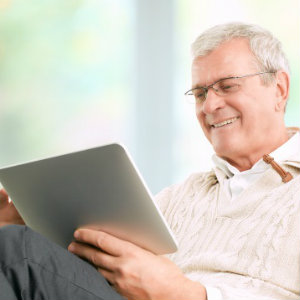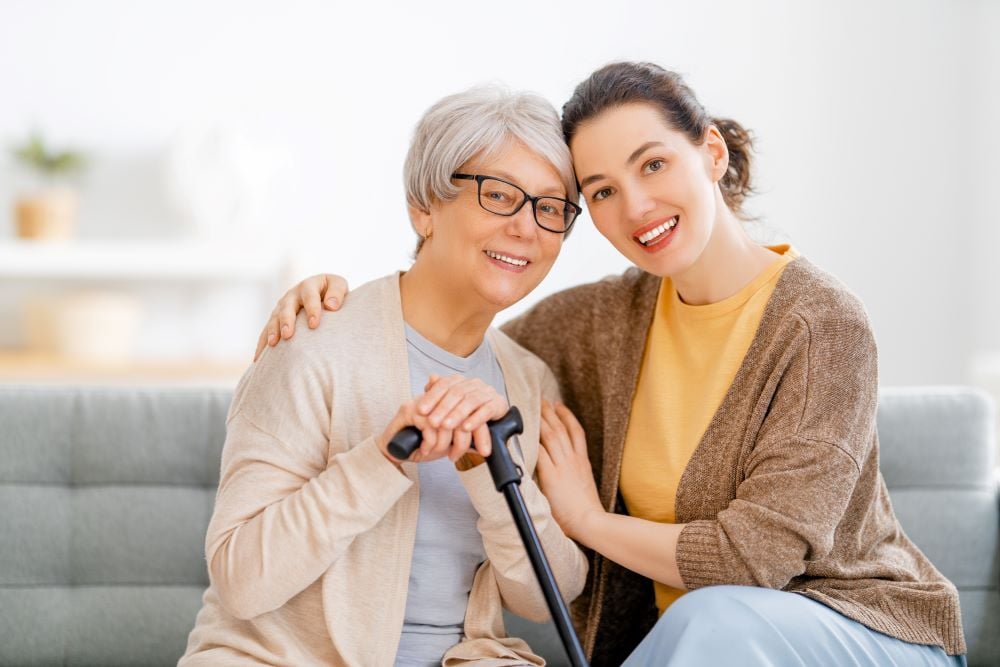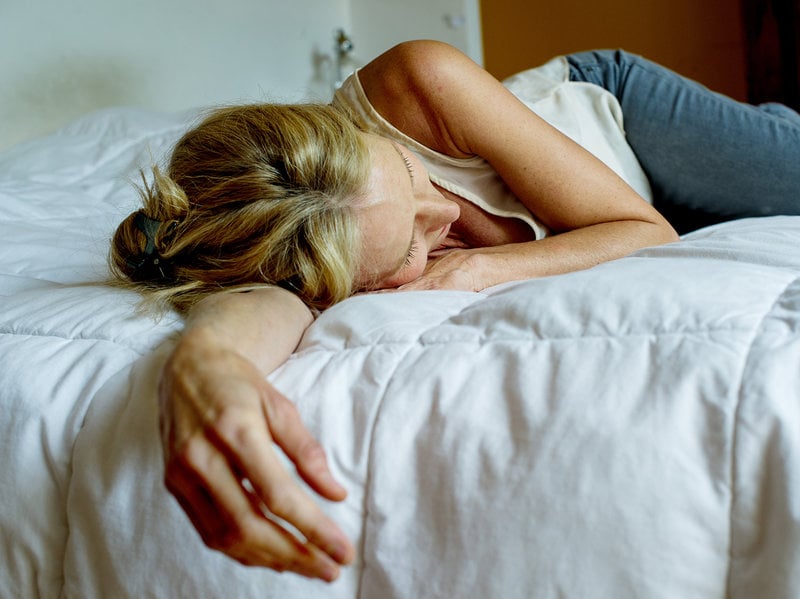Technology can make life easier and more enjoyable, and new products are regularly being created to help older adults maintain their independence. There are five main types of technology to assist older adults, according to the Center for Technology and Aging’s report, Technologies to Help Older Adults Maintain Independence: Advancing Technology Adoption. They are as follows:
- Medication optimization: These technologies “help manage medication information, dispensing, adherence, and tracking.”
- Remote patient monitoring (RPM): These include point-of-care monitoring devices, including glucometers, blood pressure monitors, and more.
- Assistive technologies: These devices and pieces of equipment help people to perform tasks and/or avoid injuries. These include “monitoring and alert systems that detect and report environmental hazards or personal crises.”
- Remote training and supervision (RTS): These help to remotely train and supervise health care workers, and provide quality assurance.
- Disease management (DM): These help people to manage health conditions, usually chronic, and also help to identify high-risk patients.
Specific Technologies to Consider
AARP lists a few technological products specially targeted for older adults in their Aging in Place Technology Watch. Here are three of them.
1. Ollo Wearables
With Ollo Wearables, you can provide friends and family members with peace of mind while also having a convenient communication device on you wherever you go.
This intriguing piece of technology is a wearable 4G smartphone that serves as a combination of a personal digital assistant with real time health monitoring. Forbes.com shares more about this device that allows families to sense, even from “great distances,” if something is wrong with the person wearing it, as it “detects falls and lack of movement. The device also allows a person facing a health emergency to immediately connect with loved ones and with medical services.”
Find more details at Ollo Wearables.
2. CarePredict
CarePredict™ Tempo™ is also wearable, and it tracks your movements over time and records them in a rhythm journal. When the pattern changes, alerts are given. As an example, perhaps you nap every afternoon. CarePredict will “see” that as normal and not issue an alert. But, if you sleep significantly more during the daytime for a week straight, this technology will register this as a change in pattern that could indicate a problem and issue appropriate alerts.
Find more at CarePredict.com.
3. Home for Life Design
When you make the decision to age in place, home renovations are often recommended. With Home for Life Design, the company promises to “use state of the art technology and tools to perform comprehensive home assessments to create home modifications that are safe, personal, accessible and cost effective.”
This technology was developed using insights of licensed occupational therapists to “identify barriers to normal routines of function and provide personal recommendations to remove or modify them.” Recommendations often include revised furniture placement, along with widened doorways, elevated beds, walk-in tubs and/or showers, grab bars in appropriate places, lowered kitchen cabinets and easy to use appliances, among others. However, this technology promises personalized recommendations, rather than simply a standardized list.
4. Independa
With Independa, your TV becomes much more than a tool for watching your favorite shows. Used by Kendal at Home, Independa is a software-based solution that allows the user and caregivers to do a variety of things like chat, set up appointments, share photos and more through the TV. Users can access everything using a simplified remote, and they don’t need passwords, login information or the internet.
5. GreatCall
Also used by Kendal at Home, the GreatCall medical alert system is a medical alert device that allows the user or wearer to get emergency medical assistance at the press of a button. GreatCall’s medical alert agents can help in a variety of situations: Agents can dispatch emergency services, contact a locksmith or contact roadside assistance, for example. While most medical alert devices can only work while the users is near or very near to his or her home, GreatCall complements your active lifestyle thanks to its ability to work across town or across the country.
These days, technology can be used for much more than surfing the web or playing games. Several new technologies, like the ones mentioned above, can help you maintain your independence and maybe even help save your life. What technologies have you used to help you maintain your independence? Let us know in the comments.












